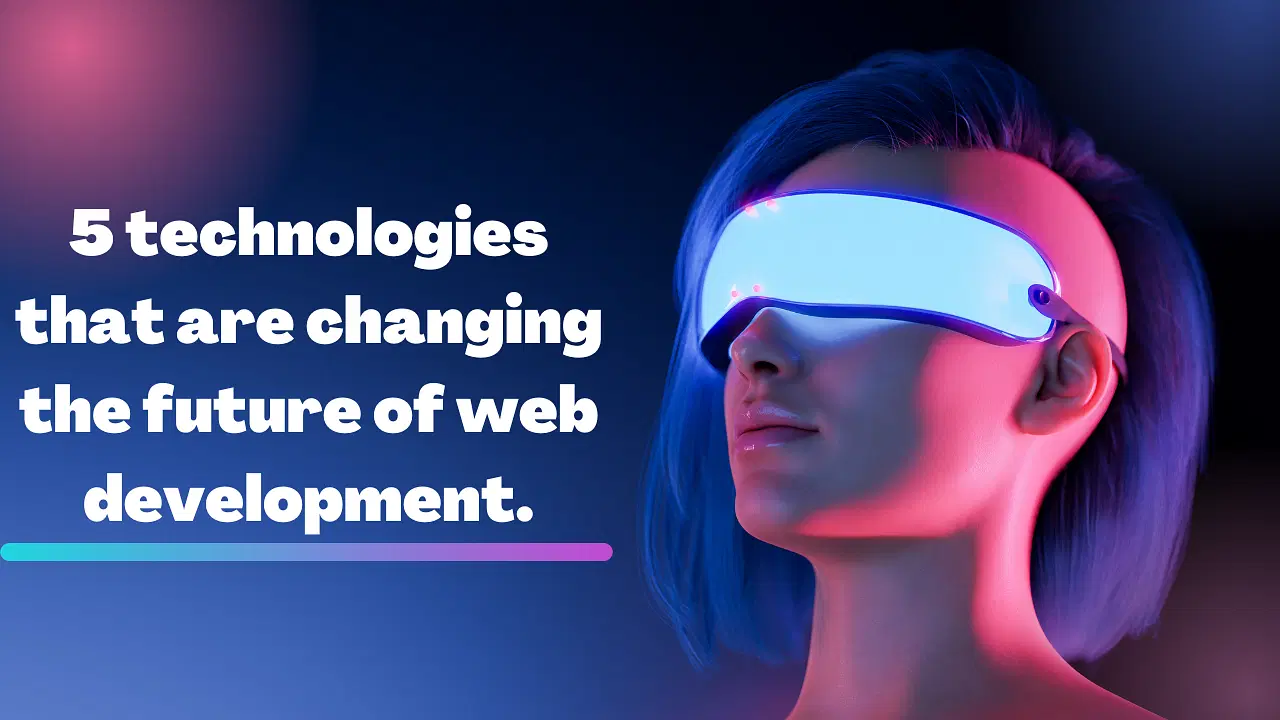5 Technologies That Are Changing The Future Of Web Development.
With thousands of technologies to choose from, it’s hard to keep track of what’s changing and where the industry’s going next. Luckily, there are industry leaders in Web Design And Development Company that are using the latest and greatest tech to build amazing things for their customers. With these 5 technologies that are changing the future of web development, you’ll know what kind of web design and development trends to be on the lookout for in 2018 and beyond! Here we go!
1) Progressive Web Apps
Progressive Web Apps (PWA) offer a new way to build and distribute apps. PWA are web apps with all of the benefits of native apps, but with the convenience, reach and low cost of websites. They work reliably on any kind of device, anywhere in the world, and they don’t need to be downloaded or installed. Just open your browser and go! That’s it. In the meantime, though, you’ll want to keep an eye out for these trends as well:
-Progressive Web Apps: These are web apps with all of the benefits of native apps without downloading or installing anything extra. They’re good at just about everything – they’re even great offline!
-Responsive Design: Build a website once and have it look good on all devices – phones, tablets and computers – without having to design three different versions.
2) Serverless Architecture
Serverless architecture relies on third-party services for hosting and execution, which is often called Functions-as-a-Service (FaaS). Developers can write code in a programming language such as JavaScript or Python and upload their code to these services to be executed. This allows developers to focus on writing code instead of managing servers and deploying resources, creating more efficiency and scalability while also reducing costs. There are many benefits to this new way of web development: it’s easier than ever before for developers to deploy changes, there’s no need to spend time learning server management, and it provides increased security since there’s no need for direct access to databases. There are many drawbacks too though: it’s not feasible if you have highly specialized needs, there can be higher costs due to the required reliance on third-party providers with limited availability, and scaling requires cooperation from providers.
3) Virtual Reality
Virtual reality has been around for a while now, but only in the past few years has it come close to what is possible with augmented reality. Virtual reality headsets allow you to explore and interact with digital environments as if they were real life, which is both exciting and terrifying at the same time. The idea that we might one day be living in a world where we can choose our virtual environment to live in is not too far off from becoming a reality for some people today. One company called Oasis VR is creating virtual worlds where people can live their lives just like in their homes or neighborhoods, complete with relationships, jobs, kids and even pets!
4) Containers and Microservices
Containers and microservices have been two of the most talked about pieces of technology in recent years, with containers being an integral part of DevOps and microservices becoming a popular way to build scalable apps. According to Microsoft, containers make it easier to package up all of your app’s code and dependencies into one neat little bundle. It allows you to run your app anywhere – on your laptop, on Azure, or on any other cloud provider. With containers, you can create a new environment for each project while ensuring that they’re always isolated from one another. This is important because it prevents any changes made by one project from impacting another.
5) AI, ML, and Blockchain
AI, ML, and Blockchain will transform the way we use and understand our computers. What do these acronyms mean? They refer to artificial intelligence, machine learning, and blockchain respectively. Let’s explore them in more depth:
–Artificial Intelligence: One aspect of AI is its ability to be trained by humans to do certain tasks better than other machines such as identifying objects in photos or videos with more accuracy than a human alone can achieve. Another aspect is its ability to learn from interacting with humans which can lead to more engaging user experiences.
–Machine Learning: Machine Learning refers to how computers improve at specific tasks over time without being explicitly programmed.
–Blockchain: Blockchains store information using data structures known as blocks which are verified and linked together using cryptography. The blocks link back to previous blocks like a chain thereby creating a linear sequence called the blockchain. The blockchain is used for Bitcoin transactions but can also be applied for things like copyright protection and digital identity management.
–Future Of Web Development: It’s clear that Artificial Intelligence, Machine Learning, and Blockchain have already changed web design by providing new ways of analyzing data and developing websites faster. These advancements will continue to change web design in ways we cannot even predict!

